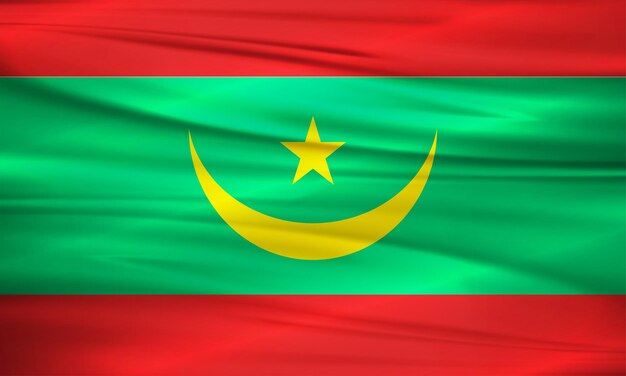Gambia’s payment system is shifting from cash-dominated transactions to an increasingly digital-first model, where mobile money, electronic funds transfer (EFT) systems, and digital banking are laying the groundwork for a modern, inclusive economy.
Despite its small size, Gambia is becoming an interesting case study for how fintech in West Africa is driving financial inclusion through smart infrastructure choices. The formal banking sector still serves a limited portion of the population, especially in rural areas. However, innovations like the Gambia EFT Switch, mobile payments in Gambia, and a growing ecosystem of mobile wallets and neobanks are changing that dynamic fast.
This blog talks about Gambia payment rails, Gambia EFT Switch, Gambia mobile money, digital banking in Gambia, and Gambia financial infrastructure.
Gambia Payment Rails
The Gambia payment rails fall into a few key categories which are EFT systems, mobile wallets, banking networks, and more recently, blockchain-based platforms for cross-border transactions. Each one serves a different purpose, but together they form the foundation of how people send, receive, and store money in the country.
The challenge with Gambia’s payment system isn’t lack of tools, it’s fragmentation. Mobile money operators don't always talk to banks. Banks may not be linked with each other in real time. Cross-border transfers are often slow, expensive, and opaque.
That’s why integrating multiple layers like EFT Switch and real-time payments in Gambia, mobile wallets, digital banks, and blockchain-powered services is not only a technical necessity but a national priority. It opens the door for true financial inclusion through digital banking in Gambia, especially for the millions who’ve never had access to a traditional account.
TransFi enables mobile payments in Gambia and beyond, connecting local rails to a global network. By routing payments through stablecoins and AI-optimized channels, it offers a faster and cheaper alternative to traditional corridors, powering Gambia’s shift to electronic and mobile payments.
Gambia EFT Switch
For years, Gambia’s financial sector and electronic payments lagged behind because banks and financial institutions simply couldn’t talk to each other efficiently. Each had its own siloed system, and that meant transfers between institutions were slow, expensive, and often manual.
That changed with the launch of the Gambia EFT Switch by the Central Bank of The Gambia. This is now the centralized hub for routing interbank electronic payments. It connects commercial banks, microfinance institutions, and eventually mobile money operators to a shared digital infrastructure.
Basically what happens is a customer initiates a transfer from their bank or mobile wallet, the request goes through the Gambia EFT Switch, which verifies, processes, and routes the payment to the receiving bank or institution. Ideally, the process takes just seconds, though in practice, not all institutions have enabled real-time capabilities yet. The Switch is designed to be interoperable. That means banks and mobile wallets can exchange funds across platforms.
Right now, the EFT Switch is primarily being used by banks, but there’s a big push underway to connect mobile money services and even international partners. Once fully integrated, it will become the foundation for electronic payments in Gambia, not just locally but for cross-border use as well.
The promise of the Gambia EFT Switch is real-time, interoperable, secure payments. If Gambia wants to modernize its economy and improve banking access, this switch isn’t optional, it’s rather essential.
Gambia Mobile Money
In a country where traditional banking doesn’t reach the majority, mobile wallets have become the go-to method for sending cash, paying bills, buying airtime, and increasingly, making small business payments.
The big players in Gambia mobile money are Africell Money, QCell’s QMoney, and to a lesser extent, Guaranty Trust Bank’s GMoney. Each offers basic services like deposits, withdrawals, peer-to-peer transfers, and bill payments. Adoption has been especially strong in peri-urban and rural areas, where formal banking access in Gambia is very low.
Gambia mobile money offers accessibility as well as affordability. All you need is a SIM card and a national ID. Mobile money agents are everywhere from city kiosks to remote villages. These agents act as cash-in/cash-out points, making digital money usable even where infrastructure is thin. Additionally, transaction fees are lower than traditional banks or remittance companies, making it ideal for low-income users.
TransFi bridges local mobile wallets to a global network of 40+ currencies and 80+ digital assets across 100+ countries. By leveraging stablecoins, it allows instant, low-cost remittances directly into mobile wallets, turning local digital money into a cross-border financial tool.
To sum it up, Gambia’s shift to electronic and mobile payments is being led by mobile money and once the Gambia EFT Switch, banks, and mobile money services are fully connected, mobile money can serve as both the entry point and backbone of a truly inclusive Gambia financial infrastructure.
Also read about: Egypt’s Payment Rails & How They Work – Meeza, InstaPay & Mobile Wallet Growth
Digital Banking in Gambia
Only about 20% of Gambians have access to a formal bank account, according to the most recent World Bank data. Branches are concentrated in urban areas like Banjul and Serrekunda, and opening an account often involves long queues, paperwork, and ID requirements that many can’t meet.
But things are changing. The rise of digital banking in Gambia is beginning to challenge the status quo and expand access to financial services for the unbanked and underbanked.
Here’s how:
- Banks going digital: Established institutions like Trust Bank, Ecobank, and GTBank are investing in mobile apps, USSD banking, and online account management. This allows customers to check balances, transfer funds, and pay bills without ever visiting a branch.
- Neobanks and fintechs: While still emerging, new players are testing the waters with mobile-first financial services. These include wallets that mimic bank accounts and offer savings, microloans, and virtual cards.
- Government and regulatory support: The Central Bank of The Gambia is encouraging financial institutions to digitize their services and align with the national Gambia EFT Switch for interoperability and faster settlements.
But there are some problems even today which are in the way of digital banking in Gambia like limited smartphone penetration, lack of digital literacy and trust issues.
That’s where partnerships with cross-border fintechs become essential. TransFi, for example, connects local digital banks and wallets to global infrastructure. It allows customers to receive cross-border payments instantly, access 80+ digital assets, and move money internationally without needing a correspondent bank.
Digital banking, if supported with smart infrastructure, can fix a lot of what’s broken in banking access in Gambia. But it can’t happen alone. It needs to integrate with mobile payments in Gambia, tie into the Gambia EFT Switch, and link to platforms like TransFi that makes everything effortless. Basically, Gambia’s payment system overview isn’t complete without digital banking, but the real value is unlocked when it’s part of a larger, connected ecosystem.
Gambia Financial Infrastructure
The strength of any economy is closely tied to how well money moves through it; and in Gambia, that movement has long been limited by outdated systems, uneven coverage, and low interoperability. But in the past few years, the country is investing in digital rails, regulatory frameworks, and fintech innovation to upgrade its entire financial infrastructure.
Core Components of Gambia’s Financial Infrastructure
- The Central Bank of The Gambia (CBG) is leading the effort. It has launched the Gambia EFT Switch, created frameworks for mobile money regulation, and is actively working on integrating more institutions into a centralized payments network.
- Commercial Banks like Ecobank, Trust Bank, GTBank, and Standard Chartered provide legacy services like salaries, loans, as well as savings and have now begun offering digital extensions through apps and online portals.
- Mobile Money Operators (MMOs) such as Africell Money and QMoney have rapidly expanded access to digital wallets, creating a parallel system that serves millions excluded from traditional banks.
- Microfinance institutions and savings cooperatives still play a critical role in financial access, especially in rural areas.
- Cross-border enablers like TransFi are bridging Gambia to the global economy by offering stablecoin-powered transfers which are instant, cost effective, secure, and globally compliant.
But true interoperability between banks, wallets, and MMOs is still missing. Without full integration, users are stuck in closed loops, and value doesn’t flow freely across the system.
Additionally, the current system isn’t fully real-time yet, but it’s something the EFT Switch and real-time payments in Gambia are aiming to fix. Apart from that, infrastructure downtimes, especially in rural areas, still affect the reliability of electronic payments in Gambia.
As Gambia’s shift to electronic and mobile payments accelerates, the rails need to keep up. That’s why a solution like TransFi stands out. It overlays existing infrastructure and makes it smarter, faster, and globally interoperable.
Conclusion
Banking access in Gambia remains limited. Mobile wallets don’t always connect with each other or with banks. Real-time settlements are possible in theory, but spotty in practice. And cross-border payments are often slow, expensive, and unpredictable.
What’s needed is not just more technology, but smarter infrastructure. This is where TransFi fits into the picture. It connects local payment rails to a global engine, powered by stablecoins, AI smart-routing, and enterprise-grade compliance. It offers instant settlements, the lowest FX fees, and real financial inclusion for individuals and businesses alike.
Gambia’s shift to electronic and mobile payments isn’t just a trend, but a necessity. Whether it’s urban workers sending money home, merchants receiving international payments, or mobile users looking for faster remittances, the future depends on systems that are fast, affordable, and connected.
FAQs
- How is mobile money used in Gambia?
Gambia mobile money is primarily used for person-to-person transfers, paying utility bills, buying mobile airtime, and cashing in and out through agent networks. Services like Africell Money and QMoney dominate the space, especially in rural and peri-urban areas where banking access in Gambia is limited.
- What is the best way to enable EFT Switch and real-time payments in Gambia?
The best way to scale EFT Switch and real-time payments in Gambia is to ensure full integration across banks, mobile money operators, and fintechs. International platforms like TransFi can plug into this system and offer real-time cross-border transfers using AI routing and stablecoin rails.
- How is financial inclusion through digital banking in Gambia increasing?
Financial inclusion through digital banking in Gambia is increasing because of mobile-first services, simplified onboarding, and wider smartphone penetration. Platforms like TransFi further expand access by turning local wallets into global money tools, allowing users to save, send, and receive across borders instantly.
- What is contributing towards Gambia’s shift to electronic and mobile payments?
Factors contributing towards Gambia’s shift to electronic and mobile payments are as follows:
- Increased smartphone and mobile penetration
- Strong mobile money networks with agent reach
- Government and central bank support for digital payment infrastructure
- The rollout of the Gambia EFT Switch
- The need for faster, cheaper cross-border payments (especially remittances)
Innovative platforms like TransFi are also accelerating this shift by making digital payments work across borders, currencies, and networks with lower fees and better speed.
5.What is the overview of Gambia’s payment infrastructure?Gambia’s payment infrastructure is a mix of mobile wallets, banks, the national EFT Switch, and cash- heavy transactions. Gambia EFT Switch enables interbank transfers, there is a rapid expansion of mobile payments in Gambia through wallets like Africell Money and QMoney, and emerging fintech platforms like TransFi are supporting international money movement.
Table of Contents
Suggested Article
Explore our products

Make global payments at the speed of a click

Accept payments, remove borders.

Unlock Seamless Digital Currency Transactions Anywhere








.png)














